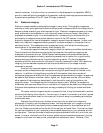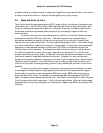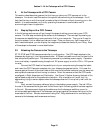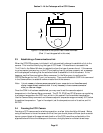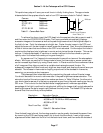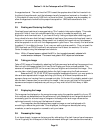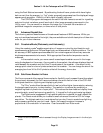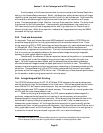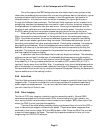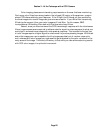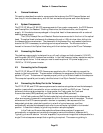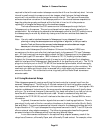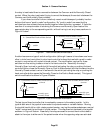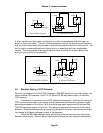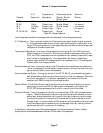
Section 3 - At the Telescope with a CCD Camera
Page 20
Another aspect of the Focus command and its various modes is the Camera Resolution
3
setting in the Camera Setup command. Briefly, the Resolution setting allows trading off image
resolution (pixel size) and image capture time while field of view is preserved. High resolution
with smaller pixels takes longer to digitize and download than Low resolution with larger
pixels. The cameras support High, Medium, Low and Auto resolution modes. The Auto mode
is optimized for the Focus command. It automatically switches between Low resolution for
Full frame mode to provide fast image acquisition, and High resolution for Planet mode to
achieve critical focus. While Auto resolution is selected all images acquired using the GRAB
command will be high resolution.
3.9.3. Track and Accumulate
An automatic Track and Accumulate mode (SBIG patented) is available in CCDOPS which
simplifies image acquisition for the typical amateur with an accurate modern drive. These
drives, employing PEC or PPEC technology and accurate gears, only need adjustment every 30
to 120 seconds. With Track and Accumulate the software takes multiple exposures and
automatically co-registers and co-adds them. The individual exposures are short enough such
that drive errors are not objectionable and the accumulated image has enough integrated
exposure to yield a good signal to noise ratio.
Operationally the camera will take an exposure, determine the position of a preselected
star, co-register and co-add the image to the previous image, and then start the cycle over
again. Up to 64 images can be co-added, and the software even allows making telescope
corrections between images to keep the object positioned in the field of view. The resulting
exposure is almost as good as a single long exposure, depending on the exposure used and sky
conditions. The great sensitivity of the CCD virtually guarantees that there will be a usable
guide star within the imaging CCD's field of view. This feature provides dramatic performance
for the amateur, enabling long exposures with minimal setup!
3.9.4. Autoguiding and Self Guiding
The CCDOPS software allows the ST-7E, ST-8E and ST-9E cameras to be used as autoguiders
and self-guiders through the commands in the Track menu. While these systems are not stand-
alone like the ST-4, but require a host computer, they can accurately guide long duration
astrophotographs and CCD images with equal accuracy. Their sensitivity is much greater than
an ST-4, and the video display easier to use.
When functioning as an autoguider, the CCD camera repeatedly takes images of a
guide star, measures the star's position to a fraction of a pixel accuracy, and corrects the
telescope's position through the hand controller. While autoguiding alleviates the user of the
tedious task of staring through an eyepiece for hours at a time, it is by no means a cure to
telescope drive performance. All the things that were important for good manually guided
exposures still exist, including a good polar alignment, rigid tubes that are free of flexure and a
fairly good stable mount and drive corrector. Remember that the function of an auto guider is
to correct for the small drive errors and long term drift, not to slew the telescope.
3
The Resolution setting in the Camera Setup command combines pixels before they are digitized.
This is referred to as on-chip binning and offers increases in frame digitization rates.



